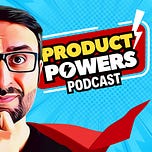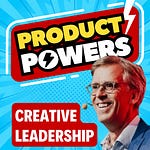The Marketing Superpower: Using Stories to Explain What You Do
In today's digital age, crafting a narrative to explain what you do has become more crucial than ever. The power of storytelling isn't limited to businesses; it's an essential tool for professionals aiming to be more impactful at work.
✍️ The Power of Brand Stories
Bert's Bees Origin Story
Bert Shavitz, a former photojournalist in New York, turned his back on the hectic city life for a quieter, simpler existence in the backwoods of Maine. Taking up beekeeping, he led a solitary life far removed from urban chaos. One fateful day, while hitchhiking, Roxanne Quimby received a ride from Bert, igniting a connection that would change their lives forever.
Together, they started a honey business, and their leftover beeswax inspired a new kind of lip balm. The product quickly became popular, not just for its quality but for the story it embodied—a natural, pure creation born of nature and human creativity. This tale gave rise to the iconic Burt’s Bees brand, now valued at over $1 billion.
This brand’s success story teaches the importance of storytelling in building emotional connections with customers, demonstrating that a well-crafted narrative can enhance product value beyond a simple logo.
How Storytelling Connects Customers to Brands
Narratives like those of Burt’s Bees foster a deeper connection between customers and brands. By sharing their journey, businesses invite customers to be part of their story. This approach can turn simple products into beloved brands, where consumers feel emotionally invested.
Why Stories Matter for Professionals, Not Just Businesses
Storytelling isn’t just for businesses. Professionals can leverage narratives to explain what they do, create connections, and stand out in their careers. Personal stories can humanise professionals, making their skills and experiences more relatable and memorable.
📜 Chirag Nijjer's Background
Growing Up in a Small Business Family
Chirag Nijjer grew up in a family that ran a small business, an environment that shaped his identity. From a young age, he learned invaluable skills such as public speaking, sales, and marketing.
Early Fascination with Branding and Marketing
Chirag's early fascination with branding and marketing was sparked while growing up in New York City. Observing the power of branding in everyday items, like tactical backpacks, kindled his interest in what makes products stand out.
Education and Career Path
Attending Lafayette College on a Posse Scholarship, Chirag delved deep into business studies, conducting workshops and helping small businesses. His educational journey led him to a successful career, currently working at Google as a Platinum Customer Success Lead while also establishing himself as a public speaker and TikTok sensation.
Current Roles at Google and as a Public Speaker
At Google, Chirag's role involves crisis management and proactive problem-solving for some of the world’s largest advertisers. Parallelly, he enjoys a speaking career, sharing insights into marketing and branding, helping professionals convey their narratives effectively.
🌍 The Importance of Cultural Identity in Business
Embracing Cultural Background as a Superpower
Chirag emphasises the importance of embracing one's cultural background. He shares that it wasn’t always easy being of South Asian descent in corporate America, but over time he realised that his cultural identity was a superpower.
How Sharing Personal Stories Creates Connections
Whether it’s sharing childhood memories or speaking one’s native language, personal stories create strong connections. Chirag highlights that these narratives add a unique layer to one's professional brand, making it more relatable and authentic.
The Rise of South Asian Representation on Social Media
Social media platforms like TikTok have been instrumental in showcasing diverse cultural backgrounds. Chirag points out how South Asian representation has grown, helping to normalise and celebrate cultural identities.
🎯 Key Marketing Concepts
The AIDA Marketing Funnel
Awareness
The AIDA model starts with awareness. Customers need to know a product or brand exists. For businesses and professionals, this means making a first strong impression.
Interest
Next is generating interest. This could involve sharing intriguing details or stories that pique curiosity and make your audience want to learn more.
Desire
Generating desire involves making people want what you offer. It's about conveying the benefits and making your product or skills seem essential.
Action
Finally, action is the step where the audience commits to purchasing or engaging. Clear calls to action facilitate this step, guiding the audience to make a decision.
How Brands Guide Customers Through These Stages
Successful brands guide customers through the AIDA stages deliberately, ensuring each step invites and retains customer engagement. Techniques include targeted advertising and personalised content.
Applying the AIDA Concept to Personal Branding
Professionals can use the AIDA model to craft a personal narrative. Start by getting noticed, then share compelling aspects of your work, make people want to know you better, and finally, encourage them to take specific actions, like connecting on LinkedIn.
📖 The Six Essential Brand Stories
1. Origin Story
A company’s origin story explains how it began. Like the tale of Burt’s Bees, it helps form an emotional connection by highlighting the brand’s journey and mission.
2. Culture Stories
These stories showcase what a company stands for beyond its products, reflecting values and ethics. Ben & Jerry’s focus on social justice issues is a prime example.
3. Product Stories
Product stories delve into the specifics, enhancing customer understanding by highlighting features and benefits.
4. Societal Stories
These address broader societal issues, showing that a brand is attuned to current events and concerns. Nike’s Colin Kaepernick campaign is a notable example.
5. Customer Stories
These narratives feature satisfied customers and their experiences. Starbucks highlighted customer experiences to show their diverse community.
6. Future Stories
Future stories give a glimpse into what the brand aspires to achieve. Brands like Tesla and Virgin Atlantic use this to inspire and lead their consumers toward the future.
How to Develop These Stories for Your Own Brand
Developing these stories involves introspection and creativity. Identify key moments, values, products, societal issues, customer testimonials, and future goals to craft a comprehensive narrative.
🗣️ Storytelling Techniques for Professionals
The Power of Simplicity in Storytelling
Keeping stories simple and relevant helps in making them more relatable and memorable. Avoid over-complicating details to keep your audience engaged.
Using Specific Language to Shape Perceptions
Use language purposely to shape how people perceive you. For instance, if you want to be seen as a problem solver, repeatedly mention the problems you’ve solved.
Practicing Storytelling Skills
Storytelling, like any skill, improves with practice. Share your stories regularly to refine your narrative and improve delivery.
📊 Tips for Effective Presentations
Avoiding Rigid Scripts
Chirag advises against rigid scripts for presentations. Instead, focus on key points and allow for flexibility to make room for spontaneous moments.
Using Slides as Visual Aids, Not Crutches
Slides should assist your narrative, not dominate it. They serve as visual anchors, keeping the audience’s attention without distracting from your speech.
Embracing Authenticity and Human Moments
Embrace your human moments, whether it’s forgetting a statistic or acknowledging a wardrobe malfunction. These moments make you more relatable and approachable.
🚫 Common Mistakes in Branding and Marketing
Lack of Clear Key Performance Indicators (KPIs)
Many fail to set clear KPIs, leading to misguided efforts. Define specific, measurable outcomes to gauge success effectively.
Focusing on the Wrong Metrics
Focusing on vanity metrics like followers instead of meaningful ones like engagement or sales can lead to poor strategic decisions. Always align metrics with your objectives.
Example: Followers vs. Sales for Online Businesses
Followers might indicate popularity, but they don’t always lead to sales. Evaluate what truly drives revenue and focus your efforts there.
💡 Developing Your Storytelling Skills
Acknowledging Privilege in Communication
Recognising your position and how it affects your communication can help in addressing biases and improving inclusivity.
The Importance of Practice and Repetition
Storytelling improves with continuous practice and repetition. Engage in regular opportunities to share your stories and refine your narrative skills.
Allowing for Spontaneity and "In-the-Moment" Pivots
Be open to spontaneous moments during storytelling. They can add an element of surprise and authenticity, making your narrative more engaging.
🎭 Creating Memorable Moments in Presentations
Using Humour and Self-Deprecation
Humour and self-deprecation can break the ice and make your presentation more enjoyable. Don’t be afraid to laugh at yourself—your audience will appreciate it.
Calling Out Potential Distractions
Acknowledging potential distractions, like a forgotten belt, can turn an awkward situation into a shared moment of laughter.
Breaking the Fourth Wall to Connect with Audiences
Engage directly with your audience to create a sense of connection. Breaking the fourth wall makes your presentation more interactive and memorable.
🤝 The Value of Transparency in Professional Settings
Openly Discussing Goals and Ambitions
Transparency about your goals and ambitions fosters trust and facilitates better collaboration among teams.
How Transparency Can Lead to Better Teamwork
When team members understand each other's goals, they can work more effectively together, aligning efforts toward common objectives.
Overcoming the Stigma Around Ambition
Break the stigma around discussing ambition. It’s natural and beneficial to be open about what you want to achieve, fostering a supportive work environment.
📚 Resources for Learning More About Storytelling and Branding
Book Recommendation: "Winning the Story Wars" by Jonah Sachs
Jonah Sachs’s book, "Winning the Story Wars", delves into how those who craft and live the best stories will rule the future. It’s an indispensable read for anyone looking to hone their storytelling craft.
Chirag's Online Content and Speaking Engagements
Chirag offers a wealth of insights through his online content and speaking engagements. Visit chogspeaks.com or connect with him on TikTok, Instagram, and LinkedIn for more tips and guidance.
🗂️ Key Takeaways
Storytelling is an invaluable skill for both businesses and professionals. It helps create connections, establish authenticity, and communicate effectively. Start developing your own brand stories today by identifying key moments, sharing personal experiences, and embracing authenticity.
❓ FAQs
1. What are the six essential brand stories?
Origin story, culture stories, product stories, societal stories, customer stories, and future stories.
2. Why is storytelling important for professionals?
It helps create connections, humanises their skills and experiences, and makes them stand out in their careers.
3. How can one practice storytelling?
Regularly share stories in professional settings, focus on key points, and be open to spontaneous moments during the narrative.
4. What is the AIDA marketing funnel?
AIDA stands for Awareness, Interest, Desire, and Action. It’s a model guiding customers through the process of becoming aware of and interested in a product or brand, to the point of taking action.
5. Why is transparency important in professional settings?
It fosters trust, facilitates better teamwork, and overcomes the stigma around discussing ambition.
📚 Recommended Resources and Insights
"Winning the Story Wars" by Jonah Sachs, recommended by Chirag for deeper insights into storytelling in marketing.
“How to make learning as addictive as social media” TED Talk, recommended by Paddy
Chirag Nijjer
"Chirag makes you want to stay in a 60-minute workshop for 60 more minutes" - With an online audience of 60k+ followers & 6.1M+ views, Chirag is a recognized expert in simplifying complex business concepts into practical advice. With compelling digital content and global speaking engagements, he employs dynamic real-world storytelling to help entrepreneurs navigate toward setting clear objectives and following research-backed methods.
In his “9-to-5”, Chirag is a Platinum Customer Success Lead at Google. He works with some of the world's largest global brands, as an expert in crisis management and proactive problem-solving.
His accolades include the Hunsicker Business Studies Award, a Dyer Innovation Fellowship, and appointments as a Whitman Economics Fellow, Dyer Innovator-in-Residence, and a c-e-o.org Global Ventures Judge.
If you’d like to get in touch, reach out to Chirag@ChiragSpeaks.com!
Links
Website: ChiragSpeaks.com
Tiktok: https://www.tiktok.com/@entrekey
Instagram: https://www.instagram.com/chiragspeaks/\












